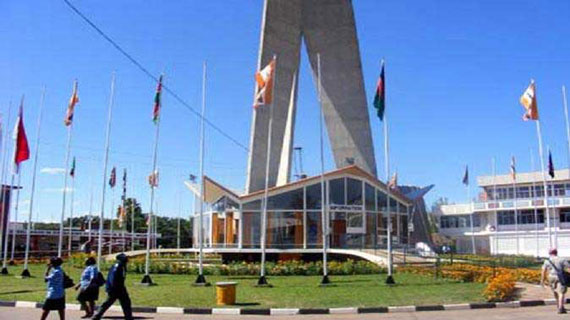Drought fears as El Niño makes comeback
Zimbabwe is likely to experience a drought in the 2023/24 cropping season due to El Niño climate phenomena that threatens to slow down the country’s economic growth projections, trigger higher food prices and stoke the much dreaded inflation.
The World Meteorological Organisation (WMO) in July this year declared the start of the devastating climate phenomenon, warning its return would lead to rising global temperatures and extreme weather conditions.
The UN weather agency estimated there is a 90 percent probability of the El Niño event persisting through the second half of the year and it is expected to be “at least moderate strength”.
According to the WMO, it occurs on average every two to seven years in episodes lasting nine to 12 months. It is a naturally occurring climate pattern linked to the warming of the ocean surface temperatures in the central and eastern Pacific Ocean and takes place in the context of a climate changed by human activities.
In Southern Africa, Zimbabwe, alongside Mozambique and Madagascar are listed as highly exposed nations to the potent climate phenomena making a return in almost four years and threatening extreme conditions such as heat waves and floods, according to a research by a Swiss-based academic and research institution, ACAPS.
While Lesotho, Malawi, Zambia, and South Africa are not currently listed as countries that might require “close monitoring”, this may change over the coming months.
Close monitoring
“Zimbabwe is a country that requires close monitoring and where the effects of El Niño may lead to negative outcomes or generate humanitarian needs,” says ACAPS.
“Forecast models anticipate the possibility of below-average rainfall towards the end of 2023, particularly in the central and southern regions. Such forecasts would affect the region’s planting seasons, increasing the possibility of hardened drought conditions and affecting the country’s crop production, livestock and food security.”
This forecast would pattern with previous El Niño events in Zimbabwe. In 2015–2016, an El Niño-driven drought affected most of Zimbabwe. Below-average rainfall during the usual growing season led to crop failure, increased food prices, and heightened levels of food insecurity throughout the country,” ACAPS says.
Finance and Economic Development Minister, Mthuli Ncube, said natural disasters and climate change presented a critical adaptation and mitigation challenge for the country with significant macroeconomic and fiscal risks. Long-term weather forecasts are predicting the occurrence of El Niño climate phenomenon during the 2023/24 rainfall season that is associated with extreme weather events.
While Zimbabwe’s Treasury has projected a 5,2 percent Gross Domestic Product growth for 2024, a poor summer cropping season may slow down overall growth by between 0,6 percent to 1,1 percent depending on intensity. Previous droughts had implications of increasing fiscal deficits by an average of 0,4 percent of GDP.
“Drier conditions are forecasted for southern Africa and other regions, which will impact negatively on agricultural output and compromise on food security of the country,” he said in the 2024 Budget Strategy Paper presented early this week.
According to Bloomberg Economics modelling, previous El Niños resulted in a marked impact on global inflation, adding 3,9 percentage points to non-energy commodity prices and 3,5 points to oil. They also hit growth to the GDP, especially in Brazil, Australia, India and other vulnerable countries, Bloomberg reported.
“El Nino presents major obstacles to GDP growth and leads to higher food prices and elevated levels of inflation,” agricultural economist Effort Paradzai said in an interview. “It thus becomes critical for Zimbabwe to start mobilising resources to prevent or rather mitigate the adverse impact of El Nino, focusing on regions likely to be worst affected.”
However, the drought could be a positive development for other sectors such as tobacco as it would help to control over-production, thereby maintaining higher prices.
Historical patterns
El Niño tends to bring below-normal rainfall in southern Africa from November–April, which can severely affect maize yields in Mozambique, South Africa and Zimbabwe.
Available seasonal forecasts anticipate below-average precipitation in the next few months in Madagascar, Mozambique, South Africa and Zimbabwe. Close monitoring is necessary as seasonal rainfall outlooks may change in September, and more countries in the region may experience below-normal rainfall towards the end of the year.
Mozambique
Mozambique is at the highest risk of severe humanitarian impacts caused or worsened by El Niño from July–December 2023, says the ACAPS. The prediction is based on seasonal forecasts and pre-existing crisis and vulnerability factors, it adds.
“Mozambique is a country of high concern, and the effects of El Niño are expected to be particularly severe or worsen major humanitarian crises,” notes ACAPS.
Mozambique National Meteorological Institute has warned that El Niño may lead to a drought in southern and central Mozambique likely to begin at the start of the rainy season in September–October, with the most significant impact anticipated between December and February 2024 and coinciding with the peak of the rainy season.
Available seasonal forecasts anticipate above-average precipitation in northern Mozambique during September–November, which may trigger floods towards the end of the year.
Madagascar
Madagascar may be exposed to drought, heat waves and flooding, the ACAPS further notes.
In 2015 and 2016, El Niño caused prolonged drought conditions and crop failure, resulting in increased food insecurity that particularly affected the country’s southern parts.
El Niño’s effects in the country vary throughout the different historical occurrences, and some past events have been associated with excess rainfall. Current seasonal forecasts anticipate below-average rainfall in parts of central Madagascar between July–September. Towards the end of the year, eastern parts of the country may receive above-average rainfall, potentially triggering flooding.-ebsinessweekly











